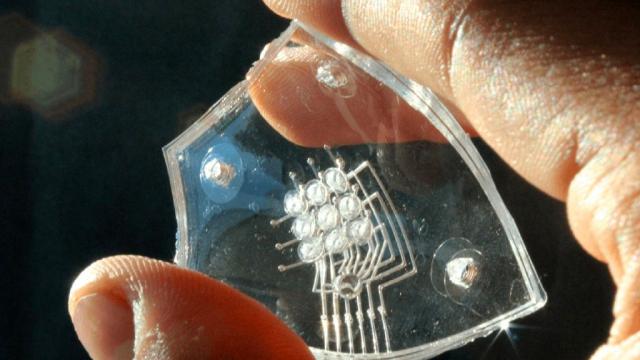Creating dynamic Braille displays that can quickly change their pattern of dots isn’t a new idea, but the existing solutions are often big boxes with complex mechanisms used to raise and lower an array of rounded pins. Researchers from Cornell University are working on an explosive new approach that could produce dynamic braille displays that are much smaller and cheaper.
Braille characters are represented by a series of small dots in specific arrangements, so producing a display that can recreate those patterns seems easy enough. It’s not, though. Where the complications arise is developing the mechanisms that power such a display. The pins that raise and lower can be densely packed, but the mechanical components like electronic servos or even hydraulic pumps take up a lot more room, resulting in a device that’s often larger than a laptop as well as heavy, complicated, and expensive. It means a dynamic Braille display that’s supposed to expand accessibility to experiences like the internet ends up not really being all that accessible to those who need it.
A team of researchers from Cornell University and the Technion-Israel Institute of Technology have come up with an alternative mechanism that sounds a little terrifying, but offers some considerable advantages to current approaches to dynamic Braille displays. In a paper published last month, the team created a mechanism made of moulded silicone that features small chambers that can be filled with a mix of methane and oxygen. Microfluidic liquid metal traces running to each chamber create a spark, just like the spark plugs in an engine do, to ignite tiny explosions that in turn cause a thin membrane of flexible silicone to inflate and expand by several millimetres, creating a tactile bump that can be felt as a Braille dot.
The explosion also causes a magnetically latched pin to shoot upwards, which prevents the expanded gases in each dot from escaping. To reset the display, a user would simply need to press slightly harder on the dots to disengage the magnetic pin, which would allow the gases to escape and the dots to deflate.
The researchers assure the tiny explosions aren’t dangerous, and they cool fast enough that the Braille dots can be immediately touched without the risk of burning a finger tip. The amount of fuel used is also very small, which means that a commercialized version of the mechanism would be completely safe for users.
Without the need for bulky servos or mechanical actuators, the new Braille display could easily be small enough to incorporate into other devices. Imagine the touchpad on a laptop gaining that functionality without being much bigger than it currently is. But the technology could be expanded further: When packed tightly enough together, the explosive dots could also be used to produce textures or other physical sensations, adding more tactile realism to virtual reality setups when integrated into gloves or clothing.
